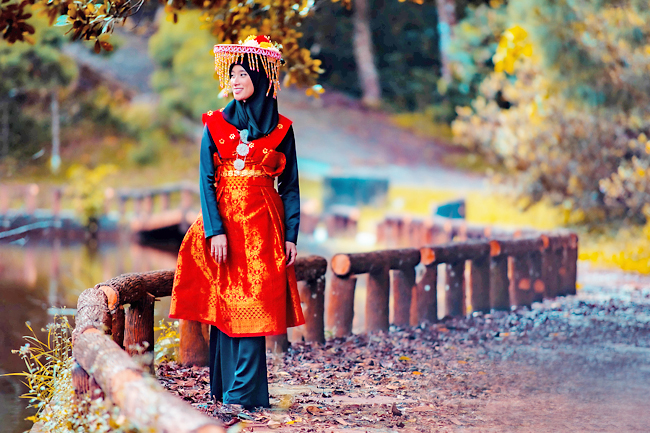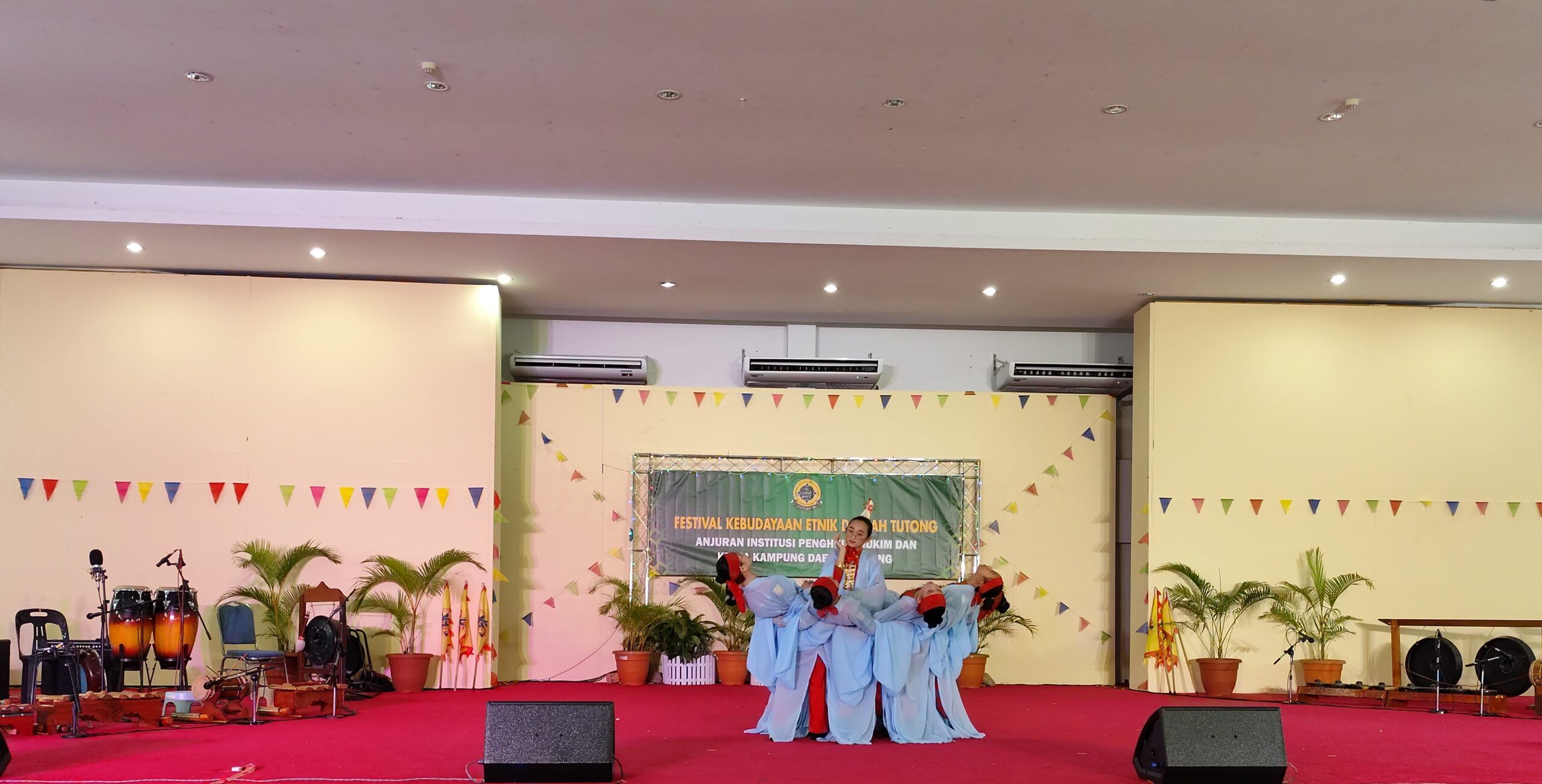Tutong District’s colourful mosaic of ethnic cultures
Tutong, one of the Sultanate’s four districts, stands out as the most ethnically diverse, as primary races represented in this district include Tutong, Kedayan, Dusun and Murut, complemented by other ethnic groups such as Chinese, Bisaya and Iban.
The district is known for its cultural mosaic, given the diverse ethnicities living within it, and celebrating that vibrant diversity within showcases is something often held to highlight its community’s richness.
Recognising the colourful cultures within this district and with the aim of fostering solidarity and unity among the diverse ethnicities present, the Tutong District’s Mukim Institutions Division passionately takes the lead in organising such cultural showcases.
As a collaborative effort involving the various mukim and village councils across Tutong District, these activities give a sense of solidarity within its residents through culture, with the hopes of maintaining care and cooperation at all levels towards the district’s progress.
In a captivating sequel to its debut last year, the Tutong Ethnic Cultural Night returned for its second edition with the compelling theme ‘Kebudayaan untuk Kedamaian’ (Culture for Peace), to serve a dual purpose – as a vibrant showcase of the district’s diverse cultural tapestry and as a means of fundraising for the National Humanitarian Fund for Palestinians in Gaza 2023.

The initiative was driven by a collective aim to raise awareness and demonstrate the solidarity and compassion of the local Muslim community, particularly towards the challenges faced by the Palestinians in Gaza. The night unfolded with a spectacular display featuring nine groups, each representing a distinct ethnic race.
Despite cultural showcase not being entirely new to Tutong District residents, the performers succeeded in gripping their audience, infusing each act with an impressive fusion of skill and artistry that left a lasting emotional impact, while also underscoring the community’s commitment to global humanitarian causes through the power of cultural expression.
Among the captivating performances, one that truly stood out was presented by the young talents from Chung Hwa School Kiudang, Tutong District. Specifically dedicated to the Tiong Hua Community, their showcase featured the mesmerising dunhuang dance and mulan dance, adding a vibrant and culturally rich dimension to the event.
The mulan dance was familiar to many watching the show, retelling the story of Hua Mulan.
According to Liong, the students’ supervising teacher, Hua Mulan was unwilling to let her brother face peril, she courageously donned men’s clothing, joining the army where she displayed remarkable bravery and adept skills in the art of war.
Her outstanding performance in battle earned her promotion to the rank of general, a testament to her talent and exceptional contributions on the battlefield.
Dunhuang dance, on the other hand, emerged from the careful observations of modern choreographers and scholars in the Dunhuang area, studying the murals in the Mogao cave.
They transformed numerous postures, paintings, and statues on the cave walls into a dance, inspired by the rich, graceful, and beautiful gestures depicted.
This unique and artistic dance has since captivated audiences worldwide, becoming a celebrated performance in China and around the globe.
“Events like this play a crucial role in fostering mutual understanding among various ethnicities, promoting respect for each other’s cultures, and building a strong sense of community,” said Teacher Liong.
Adding a captivating touch to the event, the kajat dance, performed by both male and female dancers from the Iban community, seized the attention of guests. Much like the enchanting display by the student dancers, the kajat performers adorned themselves in the distinctive traditional Iban costume, radiating a uniqueness that resonated emotionally.


PHOTOS: LYNA MOHAMAD
This dance, a customary feature of their festive Gawai Day and a frequent highlight at weddings, welcomes state dignitaries (particularly in Sarawak), and serves as a warm embrace for guests or tourists visiting a longhouse.
Teacher Chugot, the guiding force behind the Iban dancers, passionately expressed that the kajat dance serves as a profound symbol of the Iban community’s deep respect for their guests. Beyond its entertaining aspects, this dance is a cherished tradition passed down through the ages, still embraced with fervour today.
In alignment with Teacher Liong’s sentiments, Teacher Chugot emphasised the profound significance of cultural events like this. He underscored their pivotal role in preserving the rich heritage of the district, ensuring its authenticity stands resilient against the tide of modernisation.
As a fervent advocate for cultural continuity, he stressed the importance of practising and passing down these traditions to future generations, safeguarding them from being lost in the march of time.
There was also the Tamarok dance, a cherished tradition of the Dusun community, which is a captivating portrayal of their villages, performed with rhythmic grace and enriched by each group’s unique style. Rooted in animistic beliefs of the past, the Tamarok was a ritual of gratitude in the old days.
Today, this dance offers a glimpse into the Dusun’s ancient world, where female dancers played a significant role in expressing thanks.
In the old hierarchy, belian, considered priestesses, engaged in these dances and offerings. The Tamarok, now showcased as a cultural performance, reveals the intricate roles and hierarchy, reflecting the activities during thanksgiving.
The scale of Tamarok events varies, such as the grand Tamarok Padi held after the harvest season, lasting up to two days. Accompanied by instruments like the dombak, canang, gulingtangan, gandang, and gong, the dance, while not overly intricate, requires practice.
The evening’s performers hailed from various groups, including the Seri Budaya Tari Tutong, Dusun Cultural groups of Kampong Bukit Udal, Kampong Bukit, Kampong Long Mayan, and Kampong Ukong, as well as the Bisaya Cultural Body of Kampong Batang Mitus, Kampong Kiudang Cultural Body, and Kedayan Cultural Group of Kampong Lamunin.
Witnessing more of such cultural gatherings would not only be a significant educational experience but also a means to instil a sense of pride in the younger generations regarding the diverse cultural arts inherent to their respective ethnic backgrounds. – Lyna Mohamad




